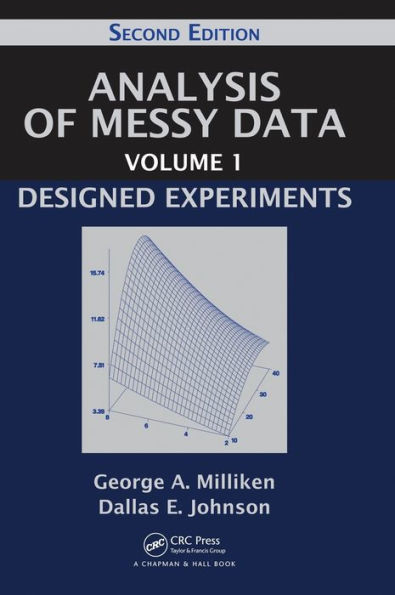New to the Second Edition
- Several modern suggestions for multiple comparison procedures
- Additional examples of split-plot designs and repeated measures designs
- The use of SAS-GLM to analyze an effects model
- The use of SAS-MIXED to analyze data in random effects experiments, mixed model experiments, and repeated measures experiments
The book explores various techniques for multiple comparison procedures, random effects models, mixed models, split-plot experiments, and repeated measures designs. The authors implement the techniques using several statistical software packages and emphasize the distinction between design structure and the structure of treatments. They introduce each topic with examples, follow up with a theoretical discussion, and conclude with a case study. Bringing a classic work up to date, this edition will continue to show readers how to effectively analyze real-world, nonstandard data sets.
New to the Second Edition
- Several modern suggestions for multiple comparison procedures
- Additional examples of split-plot designs and repeated measures designs
- The use of SAS-GLM to analyze an effects model
- The use of SAS-MIXED to analyze data in random effects experiments, mixed model experiments, and repeated measures experiments
The book explores various techniques for multiple comparison procedures, random effects models, mixed models, split-plot experiments, and repeated measures designs. The authors implement the techniques using several statistical software packages and emphasize the distinction between design structure and the structure of treatments. They introduce each topic with examples, follow up with a theoretical discussion, and conclude with a case study. Bringing a classic work up to date, this edition will continue to show readers how to effectively analyze real-world, nonstandard data sets.

Analysis of Messy Data Volume 1: Designed Experiments, Second Edition
688
Analysis of Messy Data Volume 1: Designed Experiments, Second Edition
688Hardcover(New Edition)
Related collections and offers

Product Details
| ISBN-13: | 9781584883340 |
|---|---|
| Publisher: | Taylor & Francis |
| Publication date: | 03/02/2009 |
| Edition description: | New Edition |
| Pages: | 688 |
| Product dimensions: | 7.30(w) x 10.00(h) x 1.50(d) |
